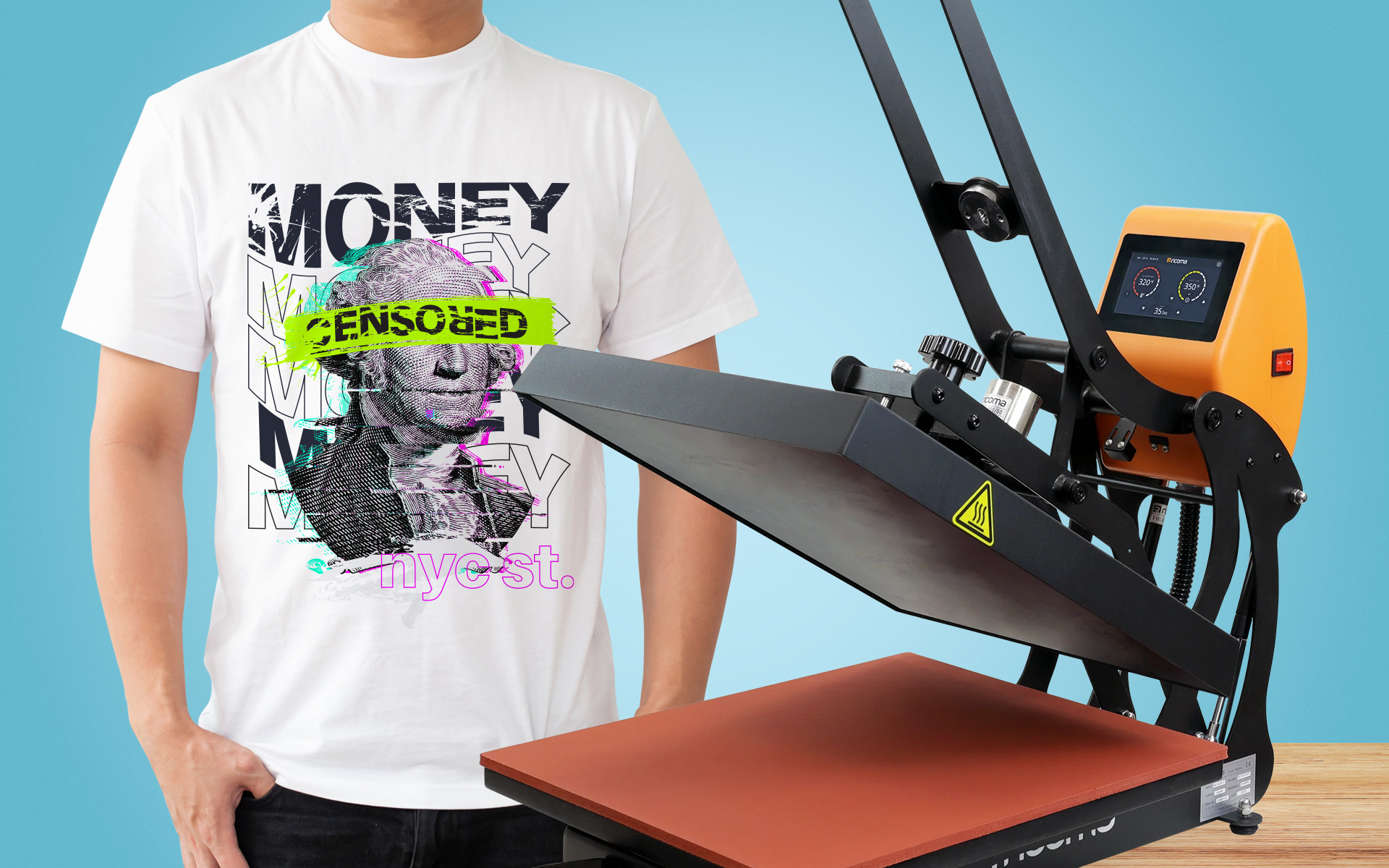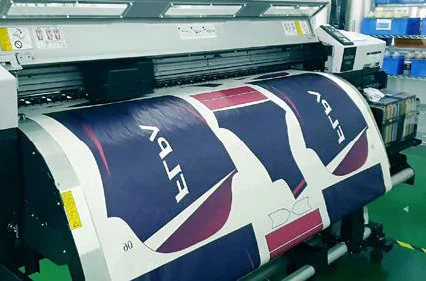Releasing Creativity with Heat Transfer Vinyl Printing for Custom-made Designs
Releasing Creativity with Heat Transfer Vinyl Printing for Custom-made Designs
Blog Article
A Comprehensive Guide to the Various Kinds Of Fabric Printing Strategies
Each approach, from the thorough workmanship of block printing to the rapid performance of screen printing, offers unique purposes and supplies distinct advantages. Digital printing's flexibility and ecological awareness stand in raw comparison to the speedy modification of warm transfer printing.
Block Printing
Block Printing, one of the oldest approaches of fabric decoration, has an abundant background that dates back to ancient civilizations. The procedure involves sculpting complex styles into wood blocks, which are then dipped in dye and pushed onto material to create patterns.
The accuracy and craftsmanship included in block printing make it a labor-intensive process, but it likewise enables a high level of modification. Artisans can produce unique patterns by integrating various blocks or varying the application of color. This flexibility has actually added to the enduring appeal of block printing in both conventional and modern fabric style.
Block printing is particularly valued for its visual qualities, consisting of the small variants in pattern and color that arise from the hand-printing process. These flaws lend a special character per item, distinguishing it from mass-produced textiles. Despite developments in contemporary printing modern technologies, block printing continues to be a cherished strategy, celebrated for its historical value and artistic worth.
Display Printing
Screen printing, another famous fabric decoration method, has actually transformed the market with its performance and flexibility. This technique entails producing a pattern, called a screen, and utilizing it to use layers of ink on the printing surface area. Each color in the style needs a different display, which allows for intricate and dynamic multi-colored prints.

Among the crucial benefits of display printing is its versatility to different sorts of textiles, consisting of cotton, polyester, and blends. This method is specifically ideal for large-volume orders due to its cost-effectiveness and rate. The longevity of the prints is another considerable benefit, as the ink bonds well with the material, guaranteeing durable designs that withstand numerous washes.
Once dried out, the layout is transferred onto the emulsion-coated screen using a UV light resource. Ink is then pushed through the pattern onto the textile utilizing a squeegee.
Screen printing is extensively made use of in the fashion industry, advertising items, and customized garments. Its capability for premium, comprehensive prints safeguards its condition as a foundation technique in fabric printing.
Digital Printing
Digital printing has promptly become an advanced strategy in the fabric market, leveraging advanced modern technology to create high-resolution layouts directly onto fabric. Unlike standard methods, electronic printing employs inkjet printers to down payment pigment or dye-based inks onto textiles, enabling vivid and detailed patterns with an amazing level of detail and shade accuracy.
Among the key advantages of electronic printing is its versatility. This method enables for on-demand printing, which dramatically decreases waste and lessens supply expenses. In addition, it sustains brief runs and customized styles, making it perfect for custom tasks and limited-edition collections. The removal of screens and other configuration requirements even more boosts efficiency, decreasing manufacturing time and labor prices.
Furthermore, electronic More Bonuses printing is eco-friendly. screen printing. It makes use of water-based inks and calls for much less water and power contrasted to conventional techniques, lining up with sustainable methods. The accuracy of digital printing likewise allows using a wider variety of materials, including cotton, silk, polyester, and blends, making sure adaptability throughout different applications
Warm Transfer Printing
Just how does warm transfer printing change fabric style? This approach has actually brought considerable improvements by enabling elaborate and vibrant styles to be transferred onto a selection of materials with impressive accuracy. Heat transfer printing involves making use of warm and pressure to move a style from a specially formulated paper onto textile. This procedure begins with publishing the preferred image onto transfer paper utilizing specialized inks. Once the photo is printed, the paper is positioned onto the material and subjected to a warmth press, which moves the ink read this from the paper to the material.
One of the key advantages of warm transfer printing is its ability to create top quality, thorough pictures promptly and effectively. It is specifically well-suited for tiny production runs and custom-made orders, making it a popular option for personalized clothing and advertising items. Furthermore, this strategy is versatile, fitting numerous kinds of materials consisting of cotton, polyester, and blends.
Moreover, warm transfer printing is reasonably cost-effective compared to other approaches, as it calls for minimal configuration and reduced first investment - heat transfer vinyl printing. This affordability, combined with its capability for generating vivid, resilient prints, highlights its essential duty in modern-day fabric design

Dye Sublimation Printing
Dye sublimation printing, a sophisticated material printing method, provides unequaled vibrancy and durability for styles on different synthetic fabrics. This method involves converting strong color into a gas without going through a liquid state, allowing the dye to penetrate the textile flawlessly. The procedure starts with printing the design onto a special transfer paper making use of sublimation inks. The published transfer paper is after that put on the material, and both go through high warm and stress utilizing a warm press. The warm causes the dye to sublimate and bond with the material fibers, creating an irreversible, high-resolution print that stands up to fading and cracking.
One of the key benefits of color sublimation printing is its capacity to create continuous-tone prints with detailed details and dynamic colors. Unlike other my site printing techniques, the color ends up being component of the textile rather than sitting on top of it, resulting in a breathable and soft finish.
Final Thought
In recap, towel printing techniques each offer one-of-a-kind advantages tailored to different requirements and applications. Block printing is prized for its artisanal top quality, while screen printing is helpful for high-volume manufacturing. Digital printing gives flexibility and ecological advantages, whereas warmth transfer printing is optimal for quick modification. Color sublimation printing produces brilliant, durable styles on artificial materials. The diversity and advancement within these methods highlight the dynamic and developing nature of the fabric printing market.
Each technique, from the precise craftsmanship of block printing to the rapid efficiency of display printing, offers special functions and uses unique benefits. Digital printing's adaptability and environmental awareness stand in plain contrast to the swift customization of heat transfer printing. Regardless of breakthroughs in contemporary printing technologies, obstruct printing continues to be a valued method, celebrated for its historic value and creative worth.
Dye sublimation printing, an advanced textile printing strategy, provides unparalleled vibrancy and longevity for layouts on numerous artificial materials. Digital printing supplies adaptability and ecological benefits, whereas heat transfer printing is excellent for rapid personalization.
Report this page